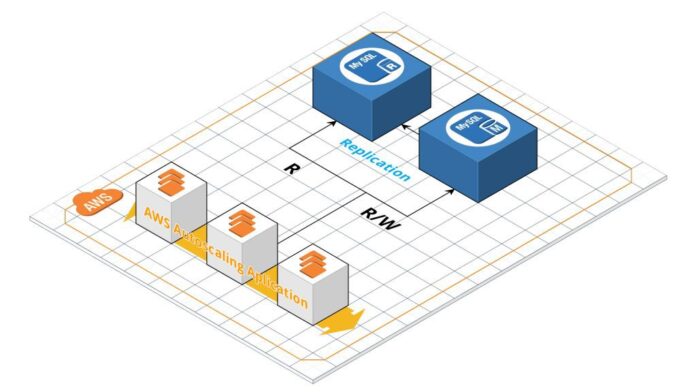Laravel is one of the most popular PHP frameworks, trusted by developers for building web applications efficiently. It offers a range of powerful built-in features designed to speed up development while keeping the codebase clean and organized. In today’s fast-paced world of web development, building apps quickly without sacrificing quality is essential. Laravel’s features play a key role in achieving both rapid development and excellent code structure.
Laravel’s Key Features for Rapid Development
Eloquent ORM for Streamlined Database Management
One of the core features of Laravel is Eloquent, an object-relational mapper (ORM) that makes working with databases simple. Eloquent allows developers to interact with databases using models instead of writing complex SQL queries. This feature helps developers manage database operations, such as creating, reading, updating, and deleting (CRUD) records, with minimal code.
Eloquent not only saves time but also improves code readability. Relationships between tables, such as one-to-many or many-to-many, are easy to define within models. Additionally, eager loading helps retrieve related data in a single query, boosting performance. Eloquent empowers developers to focus on building features rather than spending time writing raw database queries.
Artisan Command-Line Interface for Automation
Laravel’s Artisan command-line interface (CLI) is another tool that contributes to fast development. Artisan automates repetitive tasks such as generating controllers, models, and database migrations. By using simple commands, developers can quickly create files with predefined structures, saving time and reducing the chance of human error.
Artisan also supports custom commands, allowing developers to build their own automated processes. For example, developers can create commands for cleaning up data or performing routine tasks. This flexibility streamlines development, enabling teams to focus on more important features.
Blade Templating Engine for Faster Frontend Integration
Laravel’s Blade templating engine simplifies the integration of HTML and PHP in views. Blade allows developers to write clean templates with minimal code, keeping the frontend code structured and organized. Instead of repeating code across multiple pages, developers can create reusable components and layouts.
Blade’s inheritance system is also valuable. Developers can define a master layout and extend it in other views. This approach helps maintain consistency across pages and makes frontend updates much easier. Blade’s simplicity and flexibility make frontend integration faster and more organized, helping teams deliver user interfaces efficiently.
Laravel’s Features for Code Organization and Maintainability
Modular Structure and Service Providers
Laravel uses a modular structure that helps developers build organized applications. Each feature or functionality in Laravel gets separated into different modules, improving maintainability. Service providers play a crucial role in loading and registering these modules, ensuring everything works as expected.
By breaking code into smaller, modular components, developers can work on different parts of the application independently. This modular approach also makes scaling applications easier. Large codebases remain manageable, and new features can be added without disturbing existing ones.
Route Handling and Middleware
Laravel’s routing system gives developers an easy way to define the application’s routes. Routes get mapped to specific controller actions, keeping the flow of the application organized. Grouping routes based on shared properties further improves structure and reduces repetition.
Middleware adds another layer of organization by managing requests before they reach the controllers. Middleware handles tasks such as authentication, validation, and error handling. This separation of concerns helps maintain clean code and makes it easier to update specific functions without affecting others.
Dependency Injection and Service Containers
Laravel’s service container provides an efficient way to manage dependencies across the application. Dependency injection involves passing required services or objects into a class, reducing hard-coding and making the code easier to test.
By injecting dependencies, developers create loosely coupled code, which makes applications more flexible and maintainable. The service container helps resolve class dependencies, so developers don’t need to manually manage them. This promotes cleaner, more efficient code that scales well over time.
Real-World Impact on Development Efficiency
Faster Prototyping and Iteration
Laravel’s built-in features allow developers to create working prototypes quickly. By using tools like Artisan, Blade, and Eloquent, developers can rapidly build the core functionality of an app and share it with stakeholders for feedback. This fast prototyping helps teams iterate on ideas, improving the final product.
Speeding up development doesn’t mean compromising code quality. Laravel’s structure ensures applications remain clean and well-organized throughout the development cycle, even as features are added or modified.
Scalability and Flexibility
As applications grow, scalability becomes a key concern. Laravel’s modular approach and use of service providers make it easy to add new features or modify existing ones without disrupting the entire codebase. The built-in tools also help teams maintain performance and efficiency.
The flexibility of the Laravel architecture ensures that applications can scale to meet the needs of a growing user base or business without losing efficiency. By organizing code in a way that encourages separation of concerns, Laravel makes scaling a smoother process.
Conclusion
Laravel’s built-in features offer both speed and structure, making it a valuable tool for developers. Eloquent simplifies database management, Artisan automates repetitive tasks, and Blade ensures clean frontend integration. These tools, along with Laravel’s modular structure, routing system, and dependency injection, enable rapid development while keeping code organized and maintainable. With Laravel, developers can build applications quickly and ensure long-term flexibility and scalability.

